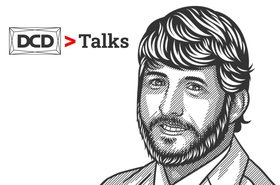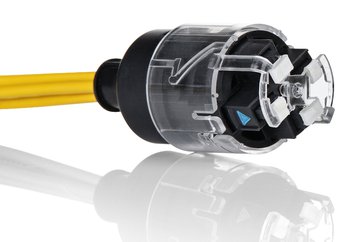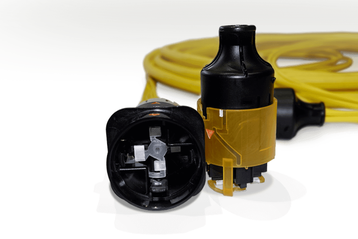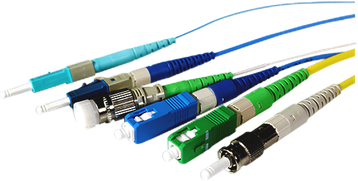When companies need to wring greater efficiencies out of the business, they look to cut unnecessary steps out of processes, slash the number of suppliers and components that go into their products or services, and generally do more with less.
However, that’s easier said than done in a fast growing, fast-moving sector such as the data center industry: the drive to find new sites, build new facilities, kit them out and make them operational is invariably stronger than the desire to conduct those processes better or more efficiently.
But when it comes to rolling out the fiber and connecting up new data center campuses there are a number of small technology innovations that can make a big difference to both the time such roll-outs take and the cost.
“To break ground in this industry is very, very difficult, because I don't think companies have been introducing revolutionary innovations and, unfortunately, that’s affected consumers. As a result, the industry has had to utilize older technology to support its extraordinary growth,” says Swick Designs founder Steve Cheng.
And Cheng should know what he’s talking about, having spent 20 years involved in the design and roll-out of hyperscale data centers for some of the biggest and best-known companies in the sector. Cheng founded Swick Designs in response to the frustrations he had encountered with the connectors, patch panels and network infrastructure that dramatically slowed down data center build-outs.
Challenge accepted
The problem, as Cheng told DCD in early February, is that many of the tools and solutions used today in data center cabling infrastructure fit-outs were designed decades ago, and are now dramatically slowing down data center builders when it comes to installing the high-speed fiber cabling in data centers and across campuses.
“There’s a number of key issues,” says Cheng. “The first is the installation processes and procedures. There’s a lot of technical expertise required to do things like pulling cables, splicing and terminating, testing and cleaning connectors to ensure the integrity of the connectivity,” says Cheng. These are not processes that can be rushed or on which corners can be cut in order to meet demanding deadlines.
In other words, while the equipment that powers the latest hyperscale data centers couldn’t be more modern – from servers to cooling to the fiber that interconnects all the devices and the data center to the outside world – the same could not necessarily be said for the components that plug it all together.
“Data centers need to better prioritize, encompass and expedite the cabling infrastructure, alongside the building construction and support systems. This will help immensely in meeting today’s requirement to get the facility up and in production as soon as possible,” adds Cheng.
The lack of innovation is only needlessly extending deadlines and adding to roll-out costs.
“Cost per port or per circuit connectivity has to be much, much lower as well. A 10G or 100G circuit has to be two-to-three times cheaper than it was five to seven years ago. And newer 100G, 400G or 1T connectivity has to be as cheap as 10G and 100G connectivity is today. The fact that it isn’t drives down efficiency and increases the cost of materials, installation and even logistics in terms of storage and shipping,” adds Cheng.
But the lion’s share of these costs end up in the field marked ‘labor’ in data center builders’ spreadsheets. According to Cheng, labor accounts for between 40 percent and 60 percent of the total cost of the new cabling infrastructure, with installers grappling with tight ducts and conduits through which fiber must be laboriously pulled; and individually cleaning, splicing and terminating connector ends, which take from the bottom line in terms of time to deliver and labor costs.
“This is where the SWK products really come into play because they are designed for both quick installation, as well as ease of installation; they're designed for effortless cost effectiveness. That means much lower costs per circuit or connection or, if you prefer, per strand,” says Cheng. Quite simply, better designed connectors, patch panels and other materials can help get data centers up-and-running much more quickly, and at much lower costs."
Beyond hyperscale
“The big thing we’re working on right now is higher density and higher capacity connectors that are smaller, with more strands, but with the same features and benefits as the existing SWK connector. In the future, maybe including some additional multicore or DWDM fibers within the same SWK connector unit, which will exponentially increase the density of your connectivity,” says Cheng.
The key to accommodating ever-more fiber in a single connector, adds Cheng, is to ensure that there is no signal degradation or losses, which is an area where many rival solutions are struggling.
Some companies have sought to utilize existing standards, like MPO/MTP, putting more strands into the same body, or making a smaller form factor of the same type of connector and then bonding them together so that they become a singular type unit, although still individual components.
This attempt to increase connectors’ densities does not come without issues, says Cheng.
“In the past, it was typically eight to 12 strands. Now they're trying to drive the number to 24, and maybe up to 32, or 36 strands within a single connector.
“But because there are many more ‘strand interfaces’ within a single connector, there's inevitably going to be a performance hit, meaning the alignment of those individual strands, because there's so much more of them, tolerances are much tighter,” says Cheng. This increases the likelihood of misalignments and poor connections feeding through into hard-to-diagnose poor network performance.
“A typical eight to 12 strand high performance connection will have a dB loss of around 0.3. That's because the strands in that single connector body are a little bit more widely spaced, so they're easier to engage. When you go to 24, 32 or 36 strands within the same connector body you've got tighter tolerances, because the strands are much more closely grouped together. So the alignment becomes more difficult,” says Cheng.
As a result, these fiber-stuffed MTP/MPO connectors suffer from greater dB losses – typically 0.5+ – affecting overall network performance. “The other downside is, you've got the same connector with the same number of strands, but they look exactly the same. This was a problem with the MPO eight and the MPO 12s as well. There's no clear difference between an MPO eight or MPO 12 or, indeed, any MPOs 24 to 30. It's all the same thing.”
The SEL-manufactured SWK connector, though, is able to keep dB losses to a minimum, and provide extreme strand capacities, while also retaining its ability to maintain cleanliness self-sufficiently to support the kind-of plug-and-play approach, increasingly popular today, that can expedite fiber installations.
“In the future, we will be able to include some multicore fibers within the same SWK connector unit, which will exponentially grow the density of your connectivity,” says Cheng. The company is now working on a whole range of data center connectivity solutions that have the same kind of innovation built-in as the SWK connector, Cheng adds.
This injection of innovation in a much neglected area is long-overdue.
“We need to innovate, we need to challenge the industry with new design and innovation to drive the next level of innovation and connected infrastructure. We’re not trying to create a revolution of insane component types that may or may not work. We’re trying to drive a revolution in what we’ve been doing for the last 50 years now, without much change, to support today's extreme level of connectivity, specifications and requirements,” says Cheng.
In order to scale-up quickly and provide peace-of-mind to customers, Swick Designs partnered with Sumitomo Electric Lightwave (SEL) to manufacture the company’s growing range of data center infrastructure devices and innovations.
“I've worked with almost all of the main manufacturers out there, and SEL was the best in terms of its agility and its ability to support the hyperscale companies that I worked with. SEL came up with customized solutions, delivered within the extreme time scales I needed for acquiring material, and maintained that level of high performance to support the hyperscale connectivity requirement,” says Cheng.
As a result, Swick’s SEL-made connectivity innovations can be ordered and acquired alongside the ultra-high fiber count optical fiber, fusion splicers, hyperscale cabinets, and other infrastructure products it offers.
“There's no one better company to work with; not least because it’s a company that has all the resources from soup to nuts, meaning they do everything from draw and produce the raw fiber, to building the cabling assemblies, to then manufacturing the patch panels and termination systems, alongside all the tools to maintain and support the components.
“SEL has it all and I can't think of any other company that I could better partner with,” says Cheng. https://sumitomoelectriclightwave.com/product-category/connectivity-solutions/
Check out the websites of Swick Designs and Sumitomo Electric Lightwave to find out more about their expanding range of innovative connectivity products
More...
-

How Sumitomo helped transform the structure of data center connections
In 27 years, Sumitomo’s Joshua Seawell has seen a huge amount of change and innovation in data center technology, and expects far more to come
-

DCD>Talks Tech Evolution with Joshua Seawell
Joshua Seawell, Sumitomo Electric Lightwave’s Director of Product Management takes a deep dive into the evolution of hardware in data centers and what that means for customer demands.
-

Sponsored Revolution on Cable Street
Cabling up data centers with ever-fatter fiber is a challenging and time-consuming task, but now some manufacturers are innovating to make it faster and easier




